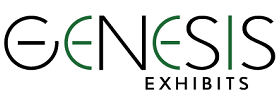What Does Hybrid Really Mean Anyway?
In a previous blog post I offered a lexicon of words and phrases that have taken on all new meanings in our current pandemic world. This word, hybrid, requires its own more extensive and serious treatment. A proper understanding of its various meanings being thrown around the business community and, in particular, the marketing world, is crucial to charting an effective plan.
First, what did it used to mean? When I was growing up (back in the Paleozoic age) the word “hybrid” was limited to biology class, typically referring to plants and experimental crossbreeding of animal species. Weird. Next, thanks in large part to the short-lived popularity of the Toyota Prius (the ultimate socially-responsible single person car), hybrid crossed over to the automotive definition of a vehicle that could run on electric and/or gasoline. This has become the more common use of the term effectively retiring the biology class reference.
Well, car makers…make room for a new bastardization of the word, courtesy of the pandemic-weary business community co-opting the word for a whole new large marketing application. However, the marketing definition needs clarification and, as I will propose, at least two very different definitions. As event marketing production companies pivoted (see earlier lexicon post for the 2020 definition of “pivot”) they grabbed hybrid to mean an event which blended an in-person experience combined with virtual online components often including live streaming, panel discussions, breakouts, webinars and networking chat rooms. This definition focuses exclusively on large events and meets the needs of the event producers but is, I believe, too narrow. There is a broader meaning that will take us far out of just the face-to-face event world.
Here’s what I mean…
With the advent of broadly accepted virtual platforms, we as consumers of information and specifically event experiences require a blending of the virtual and the in-person experience. However, this needs a broader understanding of other non-event transactions in what I call ongoing conversations.
We all live in a series of virtual and face-to-face experiences. For instance, years ago all the preparations for Thanksgiving for my family occurred via Facebook. All was going well until we realized not everyone is on Facebook, so the pies for dessert were a last minute save until 3am the night before. It took an actual human-to-human, voice-to-voice phone call to rectify the situation. The point? Marketers need to remember the hybrid nature of the relationship with the target market and create meaningful connections that tie in the tech/virtual touch with the in-person experience. This can be enhanced further when the in-person environment blends a tech-based component that ties to a post-event action. For example, the online survey you receive after you’ve left Whole Foods continues the customer experience long after you’ve left the store. The next step would be for Whole Foods to mail you a Whole Foods-branded, biodegradable grocery bag to bring with you next time. Now you’ve experienced the techno/tactile circle of life blending a virtual touch with an actual tactile free product! This is what I mean by hybrid marketing…remembering to create these continuous “conversation links” with our target market. This example highlights a B-to-C experience. However, at the end of the day people are people whether they’re shopping retail or doing business. The B-to-B world can certainly create the same kind of transactions that keep the conversation going and deepen the client/vendor experience.
